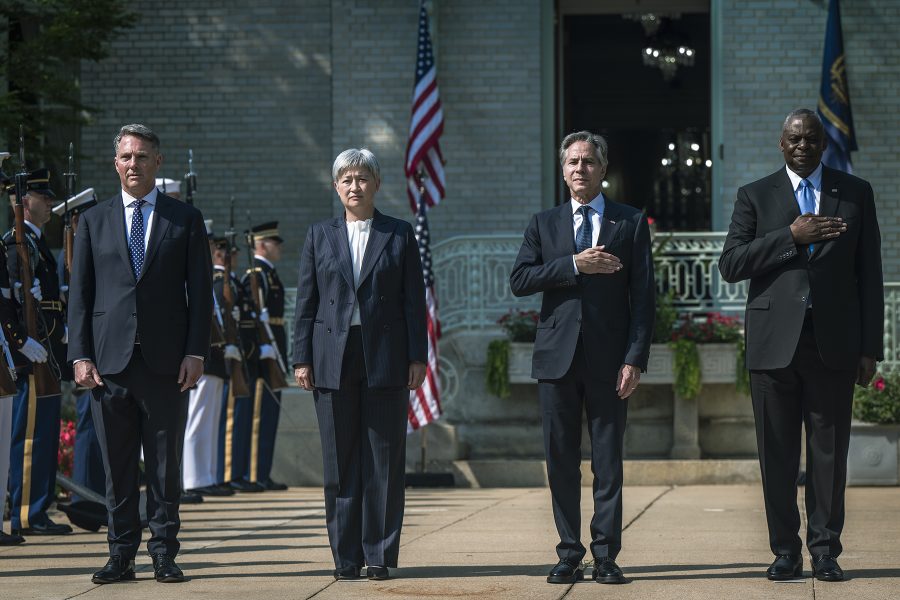ANNAPOLIS, Md.—The U.S. is finalizing an agreement to increase its aircraft presence, particularly its bombers, in Australia, part of a raft of developments the two countries discussed during the U.S.-Australia Ministerial Consultations on Aug. 6.
“We’re … increasing the presence of rotational U.S. forces in Australia,” Secretary of Defense Lloyd J. Austin III said at a joint press conference following the meeting. “All this will mean more maritime patrol aircraft and reconnaissance aircraft operating from bases across northern Australia. It will also mean more frequent rotational bomber deployments.”
The U.S. Air Force has regularly deployed bombers and fighters to Australia’s northern bases, including RAAF Tindal and Darwin, for joint training with Australian jets and regional exercises with other partners across the Indo-Pacific. It has been two years, however, since the last USAF Bomber Task Force deployment to Australia.
Earlier this year, Reuters suggested the Pentagon is constructing infrastructure in Australia to project power into the South China Sea amid rising tensions from Beijing. The report stated that documents for a U.S. military tender at RAAF Tindal include plans for facilities to house six B-52 bombers and refueling aircraft.
“The presence of American force posture in our nation provides an enormous opportunity to work with our neighbors in the region,” Australian Minister for Defense Richard Marles said at the press conference. “What this is doing is allowing us to do a much greater range of activities and operations and exercises with our partners, and we spoke about that today—with Japan, for example—where we’ve committed to doing a much greater amount of trilateral exercises between our three countries.”
Austin and Marles met with Japanese defense minister Minoru Kihara in May to announce plans to extend the three nations’ joint F-35 exercises including Bushido Guardian in Japan and Pitch Black in Australia, from 2025 to 2026. The trio agreed to conduct the first combined live-fire air-and-missile exercise in 2027, along with developing a joint air defense architecture to counter growing air and missile threats in the Indo-Pacific region.
Australian and American officials also discussed munitions during the consultations, specifically building and acquiring additional U.S.-manufactured precision-guided weapons, including the Army missiles previously supplied to Ukraine to enhance its long-range attacks.
“We’re doubling down on our defense industrial base cooperation, and this includes supporting Australia’s guided weapons and explosive ordinance enterprise,” said Austin. “By the end of the year, we’re aiming to sign two memorandums of understanding on critical munitions.”
One of the agreements will allow Australia to begin locally manufacturing Guided Multiple Launch Rocket Systems, or GMLRS, by 2025. Earlier this year, the Australian Defense Ministry signed a $37.4 million AUD ($24.3 million USD) contract with Lockheed Martin Australia to start production of these precision-guided missiles next year.
Another MOU expected to be signed by December will cover the “co-production, co-sustainment, and co-development” of Precision Strike Missiles (PrSM). The ammunition represents the Army’s next-generation precision fires weapon, with initial deliveries starting at the end of last year.
“And as we accelerate altogether on PrSM, we agreed to stand up a joint program office in early 2025,” said Austin, without specifying the planned location of the JPO. “Together, these efforts will help ensure that we have the capability and the capacity that we’ll need for decades to come.”
“These are important milestones which will see Australia gain the technology we need to establish a sovereign industry, providing opportunities for a highly-skilled workforce,” Marles said about the U.S. produced weapons back in January.


